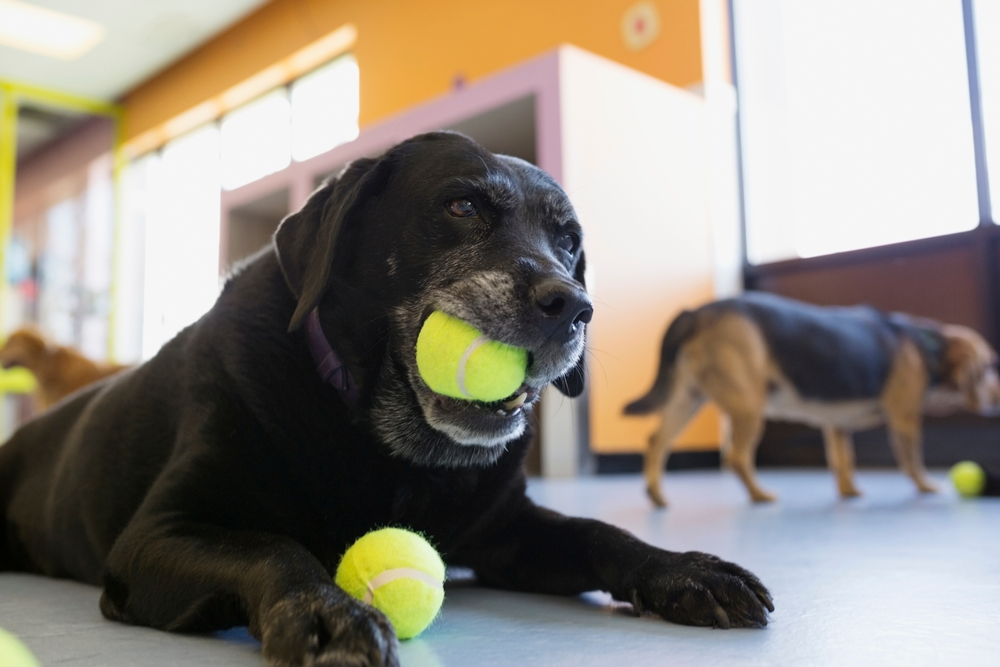One of the big benefits of dog training boarding schools is access to experienced, certified professionals. These trainers have knowledge of canine behavior from organizations like the Association of Professional Dog Trainers and IAABC-certified behavior consultants so your dog gets effective, ethical techniques.

From day one trainers assess your pup’s behavior to create a clear, goal oriented plan—whether that’s obedience fundamentals, behavior corrections or off-leash reliability. With experience in reactivity, fear or aggression trainers can troubleshoot behaviors your regular trainer—let alone DIY methods—might miss.
During multi-week stays trainers fine tune responses, adjust difficulty based on progress and make sure your dog generalizes commands across environments—unlike home training where it’s easy to fall back into old habits.
When your dog comes home, you don’t just get a report, you get insight. Trainers will give you guidance on how to reinforce new behaviors at home so you can continue to see progress and avoid common setbacks.
Benefit #1 – Faster, Consistent Learning Through Immersion
One of the standout perks of Dog training boarding schools is the immersive experience it offers. Unlike those once-a-week classes or trying to train at home on your own, board-and-train programs allow your dog to practice its skills every single day in a consistent environment that minimizes distractions. Dogs thrive on routine and repetition. At a boarding facility, they get structured training sessions several times a day.
They work through obedience drills, get chances to socialize, practice leash walking, and tackle problem-solving—all under the watchful eye of a professional trainer.
This kind of immersion means your dog makes quicker progress because they don’t have the opportunity to slip back into bad habits between sessions. Instead, they’re busy learning new behaviors, receiving positive reinforcement, and honing their skills in various settings. For instance, residential dog training often includes real-world experiences, like walking calmly in parks, behaving well in public, or ignoring distractions such as other dogs or strangers.
This kind of hands-on learning is tough to replicate at home. Plus, your dog isn’t just picking up commands—they’re also building confidence. With the support of certified trainers and a well-structured daily routine, dogs start to trust the process, respond more quickly, and gain a clearer understanding of boundaries and expectations. For pet parents who find it hard to maintain consistency, this training approach is a game-changer.
You get the advantage of professional results without having to squeeze multiple hours out of your day. By the end of the program, your dog comes home not just trained, but also happier, more confident, and ready to keep growing with your support.
Benefit #2 – Professional Expertise You Can Trust
One of the biggest perks of dog training boarding schools is that you get to work with experienced, certified professionals. These trainers have a wealth of knowledge about canine behavior, often coming from reputable organizations like the Association of Professional Dog Trainers and IAABC-certified behavior consultants. This means your dog will be trained using effective and ethical techniques.
Right from day one, trainers evaluate your pup’s behavior to create a tailored, goal-oriented plan—whether it’s mastering basic obedience, correcting unwanted behaviors, or achieving off-leash reliability. With their expertise in handling issues like reactivity, fear, or aggression, these professionals can address behaviors that your regular trainer—or even DIY methods—might overlook.
Throughout the multi-week stay, trainers continuously refine your dog’s responses, adjusting the training difficulty based on their progress. They also make sure your dog learns to generalize commands in different environments, which is something that can be tricky with home training, where it’s all too easy to fall back into old habits.
When your dog returns home, you won’t just get a report—you’ll gain valuable insights. Trainers provide you with tips on how to reinforce the new behaviors at home, ensuring that your dog continues to make progress and helping you steer clear of common pitfalls.
Benefit #3 – More Time and Less Stress for You

Board-and-train programs take the burden off. While your dog is learning, you can handle appointments, errands or travel stress-free. And when you get back, the “pup comes home trained”. This is perfect for professionals, shift workers or parents with unusual schedules.
Plus many boarding schools—including The Dog School—offer owner follow-up sessions. These help you learn the techniques used during training and maintain progress long term. By taking the day-to-day pressure off, board-and-train is a less stressful alternative to jamming weekly lessons into your schedule.
Benefit #4 – Socialization in a Controlled Environment
Socialization is key to having a well-behaved dog, but let’s be real – it can be one of the hardest things to do on your own. That’s where board and train facilities come in. They provide a controlled and safe space for dogs to meet new friends, practice their manners, and get used to new environments. Instead of risking gate aggression or chaotic dog park encounters, trainers facilitate structured interactions.
This helps shy dogs build confidence and teaches reactive dogs how to engage calmly and politely. In this supportive environment, dogs can learn important skills like bite inhibition, how to greet others politely, and overall respectful behavior – all under the watchful eye of professionals. The result?
Dogs become more comfortable around people, other pets, cars, new sounds, and new places – and therefore more relaxed at home and on outings.
Benefit #5 – Long-Term Results with Owner Involvement
One of the biggest misconceptions of board and train programs is that the dog goes home from the facility and just remains flawless. What they work towards is real, long-term behavioral modification—and that involves you, the owner.
Upon graduating, your dog comes home prepared, and you get one-on-one coaching to maintain the momentum. Trainers offer day-to-day routines, simple reinforcement strategies, and troubleshooting advice.
Boarding school graduates tend to demonstrate improved off-leash obedience, recall, and leash manners. If owners remain committed, these benefits become habits for life, resulting in a well-behaved, more joyful dog in daily life.
FAQs
Programs usually span one to four weeks, depending on your dog’s needs and the provider.
Yes—reputable schools assess behavior upfront and separate dogs accordingly. Trainers are experienced handling reactivity in structured settings.
No—short stays typically don’t affect bonding. In fact, well-managed programs can strengthen the handler-dog relationship through positive routines.
Some schools allow scheduled check-ins. Confirm visiting policies ahead of time.
Daycare provides social play with minimal training, while boarding schools offer structured, multi-session instruction to build lasting behaviors.
